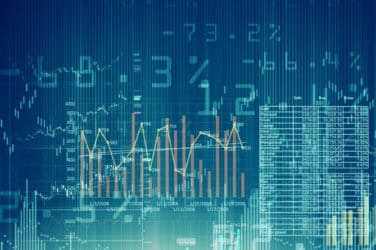

Ronan Ryan, co-founder and president of IEX Group, said the regulatory approval of the exchange’s new order type is a step-up in innovation for US displayed markets and there will be more to come.
Ryan told Markets Media: “There is uniform agreement that displayed trading had been suffering, both in terms of execution quality and size decreasing. All the innovation in US equities in the last 10 to 15 years has been in dark trading.”
Last month the US Securities and Exchange Commission approved IEX’s Discretionary Limit, or D-Limit, order type. IEX said the purpose of the D-Limit order type is to protect liquidity providers from potential adverse selection resulting from latency arbitrage trading strategies, and to encourage members to submit more displayed limit orders to the exchange.
Thanks to the broad coalition of asset managers, pension funds, brokers and market makers who support innovation in displayed liquidity, IEX Exchange's new order type D-Limit has been approved by the SEC! https://t.co/VZ5h75m3Wp
— IEX (@IEX) August 27, 2020
IEX volumes are approximately 90% dark but as many members supported D-Limit, this share is expected to reduce.
For example, electronic market maker Virtu said in its comment letter to the SEC: “Regardless of investment horizon, passive order protection at the National Best Bid and Offer benefits everyone. In particular, the IEX proposal would enable market makers who would otherwise be exposed to the risk of adverse selection to provide narrower spreads and larger quotes.”
Ryan added: “If members feel safer in lit markets it is possible that they will trade in larger size.’
The SEC said in its ruling that D-Limit orders will not impose any burden on competition that is not necessary or appropriate in furtherance of the purposes of the Exchange Act.
“The D-Limit order type is IEX’s competitive response to mitigate current competitive imbalances between liquidity providers and latency arbitrage liquidity takers,” added the SEC.
The regulator continued that the D-Limit order is designed to encourage market participants to post more priced limit orders, including displayed orders, on IEX, and so promotes just and equitable principles of trade, removes impediments to and perfects the mechanism of a free and open market and a national market, and, in general, protects investors and the public interest.
Ryan said: “D-Limit is a step-up in innovation for displayed markets and there will be more to come. We are democratizing access to high-speed technology and protecting clients from adverse selection.”
D-Limit is currently being tested by several brokers in the IEX Testing Facility and it is scheduled to go live on October 1.
Jack Miller, head of trading with Baird said in an email to Markets Media that the firm had expressed support for D-limit during the comment process and so was excited to see it approved by the SEC.
Miller said: “There have been a number of innovative order types with features designed to protect investors from adverse outcomes but this innovation has largely been limited to hidden order types. We are eager to see how the concept fares with a displayed order type.”
IEX will be filing for another new order type late this year and Ryan expects this proposal to be less controversial because it is less complex.
New exchanges
New US equity exchanges are slated to launch this year which will increase competition.
Ryan added: “Half of all trading volume in the U.S. is in the displayed market so the D-Limit order type allows IEX to compete in this space.”
Members Exchange (MEMX) is due to launch on September 21, and MIAX PEARL Equities on September 25. MEMX is an equities trading platform owned by its members who comprise of retail and institutional investors.
After two successful user acceptance tests & the onboarding of 40+ members, we continue to look forward to our launch, which is now scheduled for September 21st. Read our blog for more:https://t.co/haLmbTXOL3 pic.twitter.com/dU7N6Md0ss
— MEMX (@memxtrading) August 28, 2020
In May this year MEMX announced the closing of a strategic financing round from BlackRock, Wells Fargo, Flow Traders, Manikay Partners, and Williams Trading, with more than $65m (€55m) raised. The amount invested since inception is now more than $135m.
The Long-Term Stock Exchange (LTSE) will require companies that list their shares to publish policies on how they operate and build their businesses for the long term and goes live on 9 September 2020.
The Long-Term Stock Exchange will require companies to publish a policy that explains how the company operates its business to consider all of the stakeholders critical to its long-term success https://t.co/wlDLhsBLu3
— LTSE (@ltse) August 23, 2020
Ryan said: “We are excited about the launch of new exchanges as we support innovation.”
Miller continued that much has been made of the proliferation of exchanges but these will represent only the second and third exchanges outside the three major exchange operators. “This month we will get an early look into whether the upstarts can erode the dominance of the big three,” he added.
In addition to new exchanges being launched, Cboe Global Markets is waiting for SEC approval to launch periodic auctions in the US after success in Europe with the mechanism. Periodic auctions last for very short periods of time during the trading day and are triggered by market participants, rather than the venue, helping them find liquidity quickly with low market impact, while prioritizing size and price.
“Cboe’s auctions are interesting and a good example of innovation in US equities,” added Ryan.
Cboe’s US model will be different by including randomization of the auction message, having no broker preference and allowing displayed orders to become part of the auction. In the European Union, exchange operators may own dark and lit books, but the current US regulatory regime precludes Cboe from owning and/or operating an ATS. Therefore Cboe intends to introduce periodic auctions on its Cboe BYX Equities Exchange.
Adam Inzirillo, head of US equities at Cboe Global Markets, told Markets Media in July that periodic auctions provide an on-exchange alternative for executing block trades and attracting natural interest and also address some of the issues raised by the SEC regarding illiquid securities, where a high percentage of trading occurs off-exchange
IEX Cloud
In September last year IEX announced it was exiting the corporate listings business in order to focus on exchange trading and the launch of three new technology ventures – IEX Cloud, a developer platform designed to democratize access to financial data; IEX Astral: a data platform built in collaboration with the world’s largest asset managers; and IEX Event Stream: a data messaging platform that utilizes IEX’s core technology in areas outside finance.
The Covid-19 pandemic has led to staff working from home and a demand for remote access to data and systems via the cloud.
“There has been a big uptick in client adoption of IEX Cloud,” added Ryan. “We aimed to democratize access to data and more providers are joining the platform.”
Since IEX Cloud launched in May last year the number of users has grown to approximately 100,000 from 133 countries. The average month-on-month growth is more than 12% and IEX has more than 800 million API requests on a daily basis according to the company.







